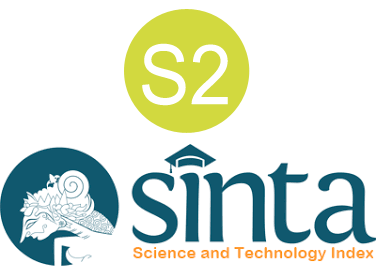Representasi Wacana Kalepasan sebagai Konsep Estetika dan Etika Spiritualitas Manusia dalam Kakawin Panca Dharma
DOI:
https://doi.org/10.37329/jpah.v9i1.3616Keywords:
Kakawin Panca Dharma, Liberation (Kalepasan), Aesthetics, Ethics, Spirituality, SilenceAbstract
The Kakawin Panca Dharma (KPD), comprising Dharma Sawita, Dharma Wimala, Dharma Niskala, Dharma Sunya, and Dharma Putus, presents a textual discourse on kalepasan (liberation) as the essence of human spirituality and aesthetic experience in Old Javanese literature. This study aims to examine how KPD represents kalepasan as both ethical and aesthetic dimensions of spirituality, while also exploring the aesthetic experience of the kawi (poet) as an act of spiritual offering to the Creator. Employing a qualitative approach grounded in semiotics and hermeneutics, the research investigates the forms, functions, and meanings of kalepasan embedded in the language, symbols, and metaphors of the texts. The findings reveal that KPD articulates kalepasan not merely as a metaphysical doctrine but as an ethical–aesthetic practice rooted in humility, purification of the self, and the unification of the self (kawi), the cosmos, and the divine. The figure of the kawi-wiku, exemplified by Kamalanatha, embodies a paradoxical stance of self-negation and self-affirmation, thereby generating a profound aesthetic experience. Liberation in KPD is not achieved through ritual formalism alone, but through contemplative silence, the cessation of bayu, sabda, idep (energy, speech, thought), and the alignment with the niskala dimension. Silence (sunya, putus, nirbhana) thus emerges as both the key aesthetic category and the highest ethical ideal, signifying the peak of rasa and ineffable bliss. Accordingly, KPD may be regarded as a “temple of language,” where literature itself becomes a medium of inner yadnya (sacred offering) and a pathway to liberation. This study underscores the enduring significance of KPD not only as a philological and historical text, but also as a source of ethical and aesthetic spirituality relevant to contemporary reflections on human liberation.
References
Acri, A. (2011). A New Perspective For ‘Balinese Hinduism'in The Light Of The Pre-Modern Religious Discourse: A Textual-Historical Approach. The Politics of Religion in Indonesia, 142-166. Routledge.
Agastia, I. B. G. (2010). Yoga Sastra. Denpasar: Yayasan Dharma Sastra.
Brown, K. W., & Ryan, R. M. (2003). The Benefits Of Being Present: Mindfulness And Its Role In Psychological Well-Being. Journal of Personality and Social Psychology, 84(4), 822-848.
Chiesa, A., & Serretti, A. (2011). Mindfulness-Based Stress Reduction For Stress Management In Healthy Adults: A Review And Meta-Analysis. Journal of Alternative and Complementary Medicine, 17(5), 447-455.
Conway, M. A. (2005). Memory And The Self. Journal Of Memory And Language, 53(4), 594-628.
Creese, H. (2012). Perempuan Dalam Dunia Kakawin: Perkawinan dan Seksualitas di Istana Indic Jawa dan Bali. Denpasar: Pustaka Larasan.
Creswell, J., & David, C. (2018). Research Design Qualitative, Quantitative, and Mix Methods Approaches (Fifth Edition). Los Angelas: SAGE.
Halliday, M. A. K., & Hasan, R. (1992). Bahasa, Konteks, dan Teks: Aspek-Aspek Bahasa dalam Pandangan Semiotik Sosial. Yogyakarta: Gadjah Mada University Press.
Jannah, D. S. M. (2024). Mindfulness and Anxiety in Adolescents: Systematic Literature Review Based on Big Data. Bulletin of Counseling and Psychotherapy, 6(1).
Jung, C. G. (2018). Diri Yang Tak Ditemukan. Yogyakarta: IRCiSoD.
Jung, C. G. (2022). Mencari Kedamaian Jiwa. Yogyakarta: IRCiSoD.
Nikitina, E. S. (2023). Semantic Approach in Psycolinguistic. RUDN: Journal of Language Studies, Semiotics, and Semantic, 14(2), 435-445.
Palguna, I. B. M. D. (1999). Dharma Sunya Memuja dan Meneliti Siwa. Denpasar: Yayasan Dharma Sastra.
Ratna, N. K. (2007). Teori, Metode, dan Teknik Penelitian Sastra dari Strukturalisme Hingga Poststrukturalisme Perspektif Wacana Sastra. Yogyakarta: Pustaka Pelajar.
Sauer, S., Muehlnickel, W., & Rief, W. (2018). The Effect Of Mindfulness On The Psychological Well-Being Of Patients With Chronic Pain: A Systematic Review And Meta-Analysis. Journal of Health Psychology, 23(13), 1630-1643.
Suarka, I. N. (2007). Kidung Tantri Pisacarana. Denpasar: Pustaka Larasan.
Wellek, R., & Warren, A. (1993). Teori Kesusastraan (Terjemahan Melalui Budiyanto). Jakarta: Gramedia.
Yasa, I. W. S. (2007). Teori Rasa: Memahami Taksu, Ekspresi, dan Metodenya. Denpasar: Widya Dharma.
Zoetmulder, P. J. (1991). Manunggaling Kawula Gusti. Jakarta: Gramedia Pustaka Utama.
Zoetmulder, P. J. (1994). Kalangwan Sastra Jawa Kuno Selayang Pandang. Jakarta: Djambatan.
Zoetmulder, P. J., Robson, S. O., & Darusuprapta, S. (1995). Kamus Jawa Kuna-Indonesia. Jakarta: Gramedia Pustaka Utama
Downloads
Published
How to Cite
Issue
Section
License
Copyright (c) 2025 Ni Made Ari Dwijayanthi

This work is licensed under a Creative Commons Attribution-ShareAlike 4.0 International License.
An author who publishes in the Jurnal Penelitian Agama Hindu agrees to the following terms:
- Author retains the copyright and grants the journal the right of first publication of the work simultaneously licensed under the Creative Commons Attribution-ShareAlike 4.0 License that allows others to share the work with an acknowledgement of the work's authorship and initial publication in this journal
- Author is able to enter into separate, additional contractual arrangements for the non-exclusive distribution of the journal's published version of the work (e.g., post it to an institutional repository or publish it in a book) with the acknowledgement of its initial publication in this journal.
- Author is permitted and encouraged to post his/her work online (e.g., in institutional repositories or on their website) prior to and during the submission process, as it can lead to productive exchanges, as well as earlier and greater citation of the published work (See The Effect of Open Access).
Read more about the Creative Commons Attribution-ShareAlike 4.0 Licence here: https://creativecommons.org/licenses/by-sa/4.0/.








